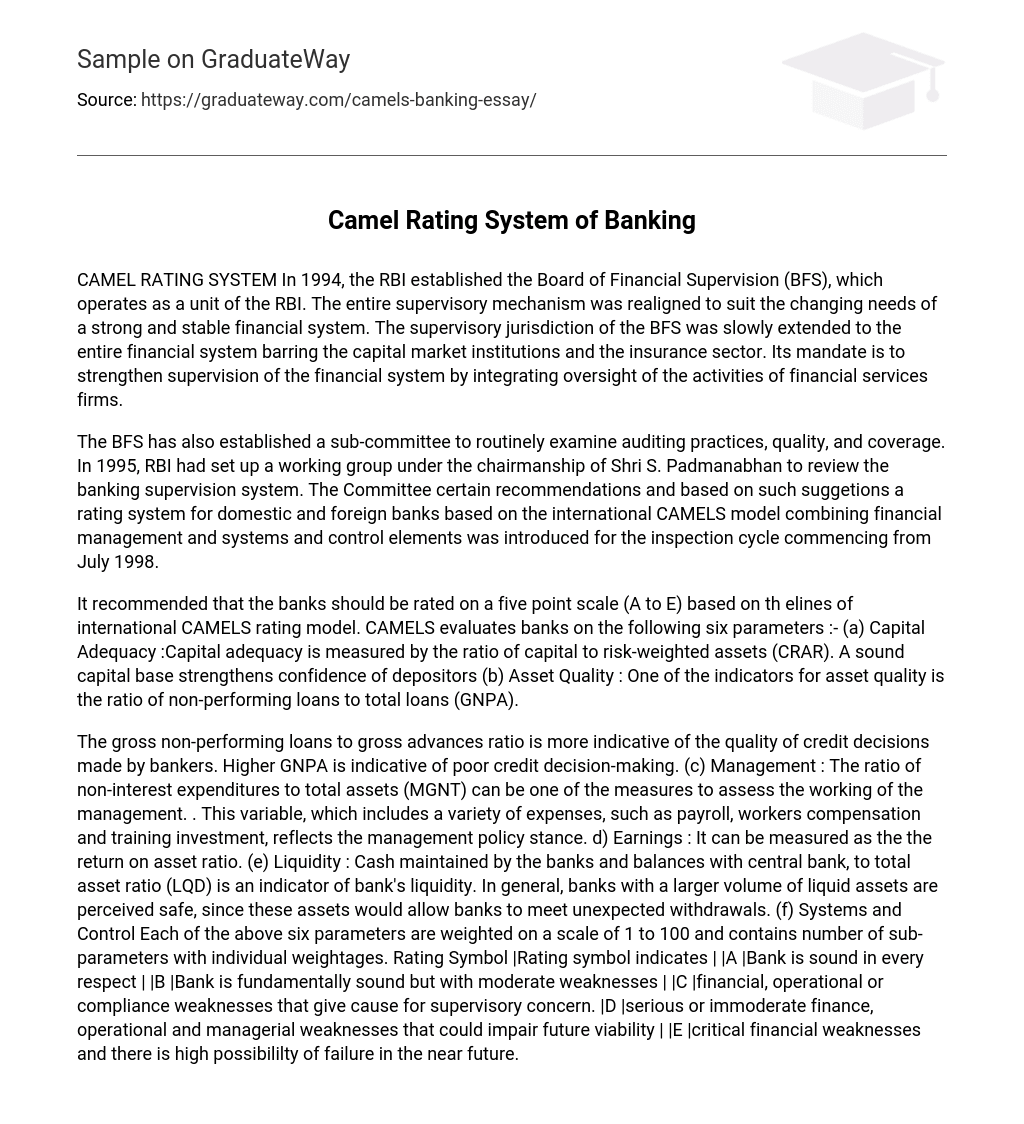The RBI established the Board of Financial Supervision (BFS) in 1994 as a division, but it has undergone restructuring to improve the stability of the financial system. The BFS now has regulatory authority over all aspects of the financial system, except for capital market institutions and insurance. Its goal is to enhance oversight by integrating supervisory efforts and strengthening financial service firms.
The BFS has created a sub-committee to regularly assess auditing practices, quality, and coverage. In 1995, RBI formed a working group led by Shri S. Padmanabhan to evaluate the banking supervision system. The Committee made specific suggestions, which led to the implementation of a rating system for domestic and foreign banks. This rating system is based on the international CAMELS model, which combines financial management and systems and control elements. It was introduced for the inspection cycle starting in July 1998.
The banks should be rated on a five point scale (A to E) as recommended. This rating should be based on the lines of the international CAMELS rating model. CAMELS evaluates banks on six parameters:
- Capital Adequacy :Capital adequacy is measured by the ratio of capital to risk-weighted assets (CRAR). A sound capital base strengthens confidence of depositors
- Asset Quality : One of the indicators for asset quality is the ratio of non-performing loans to total loans (GNPA). The gross non-performing loans to gross advances ratio is more indicative of the quality of credit decisions made by bankers. Higher GNPA is indicative of poor credit decision-making.
- Management : The ratio of non-interest expenditures to total assets (MGNT) can be one of the measures to assess the working of the management. . This variable, which includes a variety of expenses, such as payroll, workers compensation and training investment, reflects the management policy stance.
- Earnings : It can be measured as the the return on asset ratio.
- Liquidity : Cash maintained by the banks and balances with central bank, to total asset ratio (LQD) is an indicator of bank’s liquidity. In general, banks with a larger volume of liquid assets are perceived safe, since these assets would allow banks to meet unexpected withdrawals.
Systems and Control: Each of the six parameters mentioned above is assigned a weight on a scale of 1 to 100, and each parameter consists of several sub-parameters with their own respective weights.





